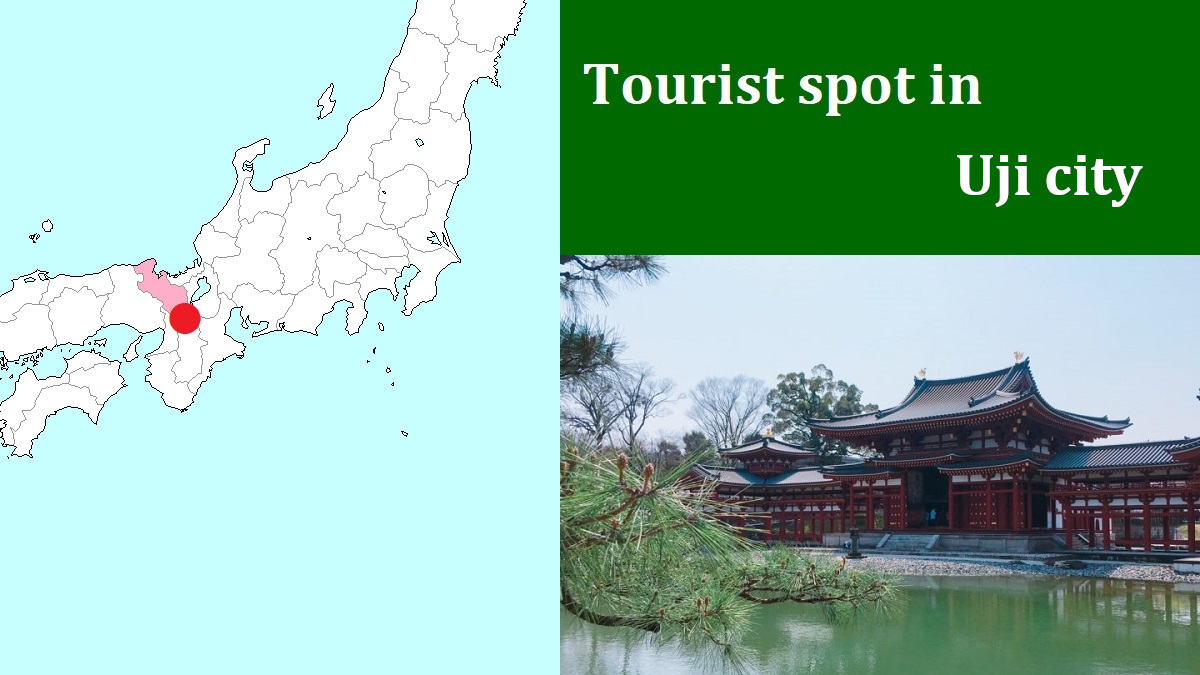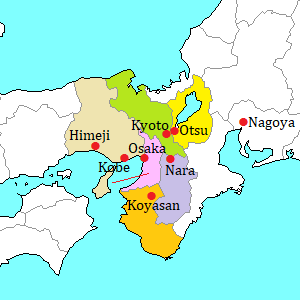Manpukuji temple [萬福寺]
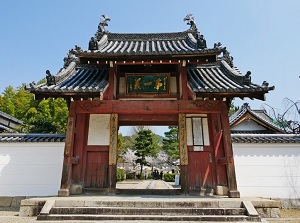
Somon of Manpukuji
Photo by Kyoto Free Photo
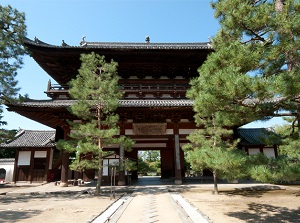
Sanmon of Manpukuji
Photo by inariage.com
Manpukuji is a Buddhist temple of Ôbaku sect which is one of Zen Buddhism.
The main buildings were designated National Treasures in 2024.
It is located about 3 km north of central Uji city, and about 10 km south-southeast of Kyoto station.
Daigoji is about 5 km north of this temple.
This temple was founded by Chinese high priest Ingen Ryuki (1592-1673) in 1661.
He was a famous high priest in Ming (current China), and was invited by Japanese priests in 1654.
Japanese government asked him to do religious activity, so he had lived the rest of his life in Japan.
He founded Ôbaku-shu, the third Zen sect in Japan, in this temple.
It is said that the religious principle is similar to Japanese Rinzai sect which is one of Zen Buddhism.
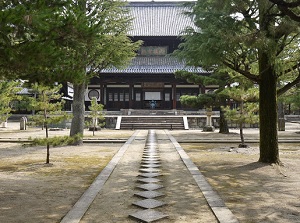
Approach to Daiouhouden in Manpukuji
Photo by Kyoto Free Photo
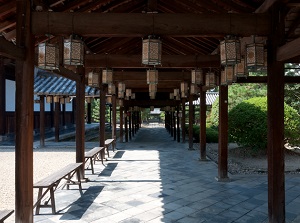
Corridor in Manpukuji
Photo by inariage.com
Because the founder was Chinese, this temple was built in Chinese-style and the language of priests, the manners of ceremonies, the meals are also Chinese-style.
So this temple gives a little different impression in comparison with the other Japanese temples.
By the way, "common bean" is "Ingen-mame" in Japanese.
It is said that common beans were introduced to Japan by priest Ingen at the first time.
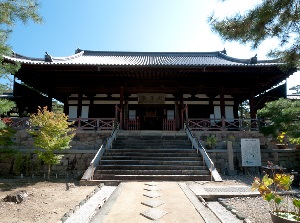
Tennoden in Manpukuji
Photo by inariage.com
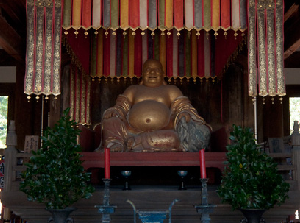
Hotei statue in Tennoden
Photo by inariage.com
The main part of the precinct is about 350 meters from east to west and about 250 meters from north to south.
Somon gate (総門) is the entrance and is on the west side of the temple.
It was built in 1661, and has quite Chinese style.
Big Sanmon (三門) is the main gate and was built in 1678.
There are many buildings in the precincts, and some corridors connect some buildings.
And main approaches in the precinct are unique.
Square stones are arranged in a line in the middle of the approaches.
The entrance hall is Tennoden (天王殿)
The statue of Miroku-Bosatsu Buddha is enshrined in Tennoden, but the fat figure is unique and is called "Hotei" in Japan.
He was a legendary high priest in China in the 10th century, and it is said that he was an incarnation of Miroku-Bosatsu.
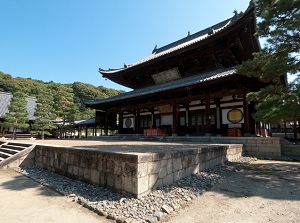
Daiouhouden in Manpukuji
Photo by inariage.com
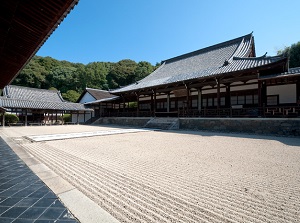
Hattou in Manpukuji
Photo by inariage.com
Daiouhouden (大雄寶殿) is the central temple in Manpukuji.
It was built in 1668, and many statues are enshrined.
There is Hattou (法堂) behind Daiouhouden.
It is the main hall for preaching.
The form of banisters of the building is unique.
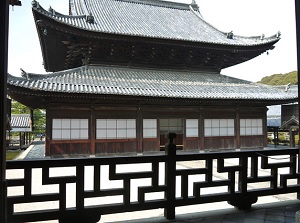
Unique banister in Manpukuji
Photo by Kyoto Free Photo
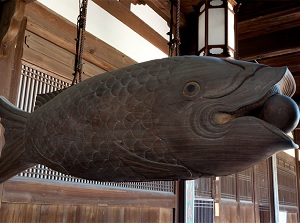
Fish-shaped wooden carving in Saido
Photo by inariage.com
There is Saido (斎堂) to the south of Daiouhouden.
It is the dinning hall for the priests.
A big fish-shaped wooden carving is hung and is struck upon signal at mealtime.
In this temple, a Chinese-style vegetarian dish is served for visitor.
To eat it, reservation is requested by 3 days before.
How to get here
By JR Nara Line, about 20 minutes from Kyoto to Obaku station.
(Rapid train doesn't stop at this station.)
About 5 minutes walk from the station.

